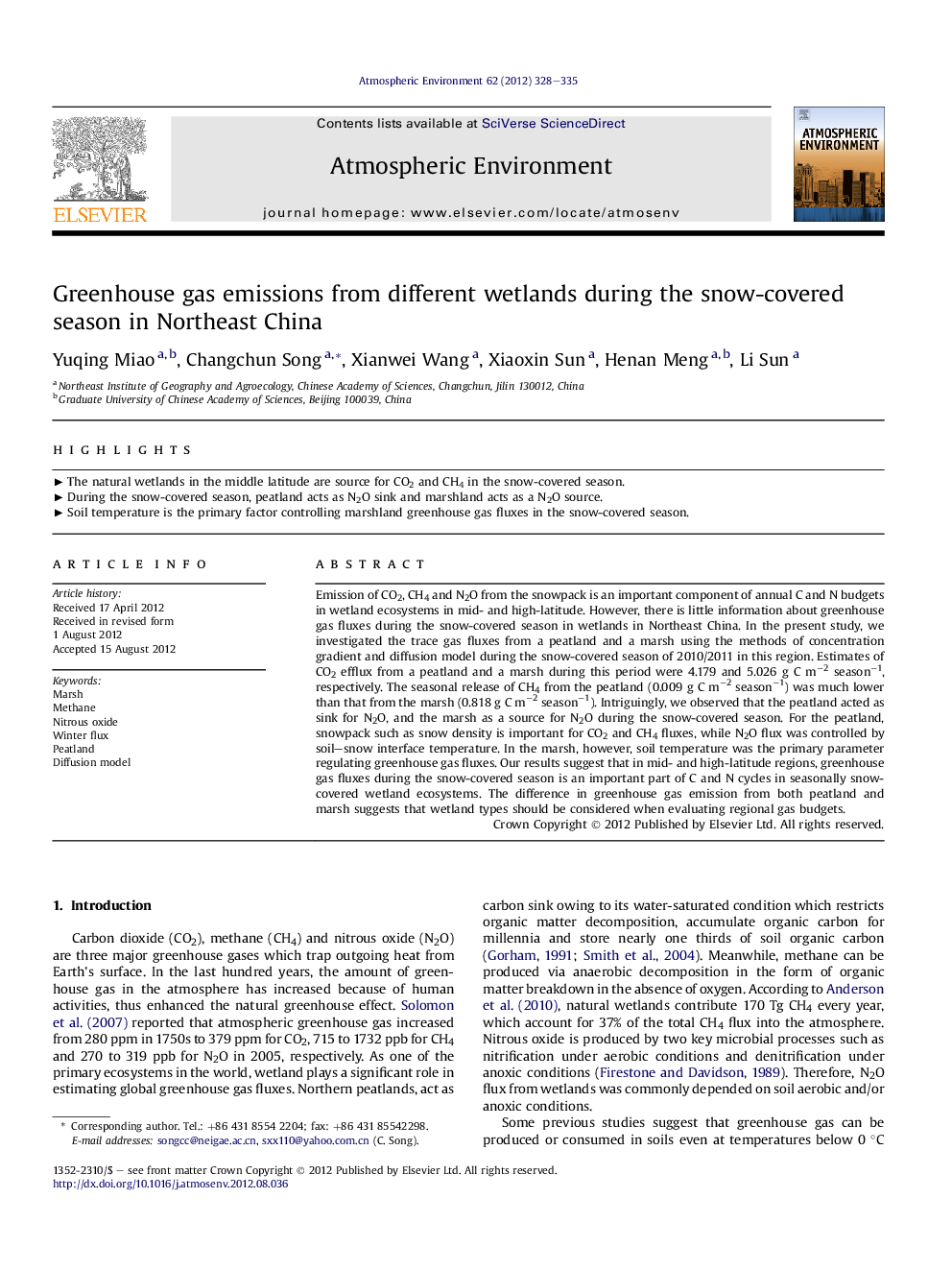| Article ID | Journal | Published Year | Pages | File Type |
|---|---|---|---|---|
| 4438660 | Atmospheric Environment | 2012 | 8 Pages |
Emission of CO2, CH4 and N2O from the snowpack is an important component of annual C and N budgets in wetland ecosystems in mid- and high-latitude. However, there is little information about greenhouse gas fluxes during the snow-covered season in wetlands in Northeast China. In the present study, we investigated the trace gas fluxes from a peatland and a marsh using the methods of concentration gradient and diffusion model during the snow-covered season of 2010/2011 in this region. Estimates of CO2 efflux from a peatland and a marsh during this period were 4.179 and 5.026 g C m−2 season−1, respectively. The seasonal release of CH4 from the peatland (0.009 g C m−2 season−1) was much lower than that from the marsh (0.818 g C m−2 season−1). Intriguingly, we observed that the peatland acted as sink for N2O, and the marsh as a source for N2O during the snow-covered season. For the peatland, snowpack such as snow density is important for CO2 and CH4 fluxes, while N2O flux was controlled by soil–snow interface temperature. In the marsh, however, soil temperature was the primary parameter regulating greenhouse gas fluxes. Our results suggest that in mid- and high-latitude regions, greenhouse gas fluxes during the snow-covered season is an important part of C and N cycles in seasonally snow-covered wetland ecosystems. The difference in greenhouse gas emission from both peatland and marsh suggests that wetland types should be considered when evaluating regional gas budgets.
► The natural wetlands in the middle latitude are source for CO2 and CH4 in the snow-covered season. ► During the snow-covered season, peatland acts as N2O sink and marshland acts as a N2O source. ► Soil temperature is the primary factor controlling marshland greenhouse gas fluxes in the snow-covered season.
